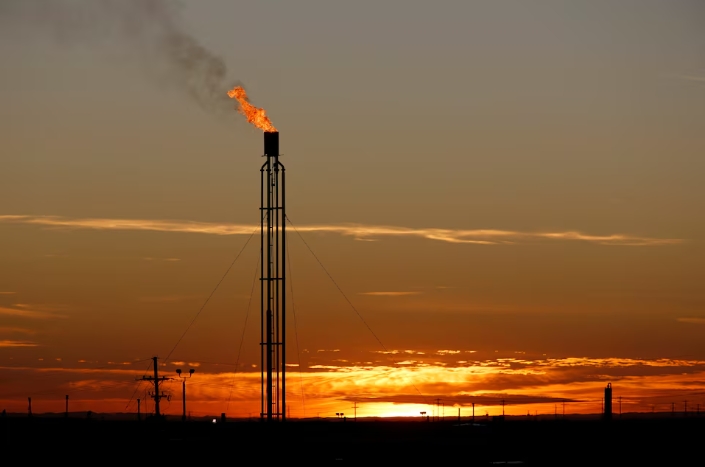
Prices were also supported by an ongoing decline in output.
Front-month gas futures for June delivery on the New York Mercantile Exchange rose 5.3 cents, or 2.5%, to settle at $2.195 per million British thermal units (mmBtu), the highest close since Jan. 29 for a second day in a row.
U.S. gas production was down about 9% so far in 2024 after several energy firms, including EQT (EQT.N), opens new tab and Chesapeake Energy (CHK.O), opens new tab, delayed well completions and cut back on other drilling activities after prices fell to 3-1/2-year lows in February and March.
EQT is currently the biggest U.S. gas producer and Chesapeake is on track to become the biggest producer after its merger with Southwestern Energy (SWN.N), opens new tab.
In the spot market, meanwhile, analysts said upcoming gas pipeline maintenance on U.S. energy company Kinder Morgan's (KMI.N), opens new tab Permian Highway Pipeline from May 7-12 and Gulf Coast Express from May 14-21 could push average next-day gas prices at the Waha Hub in West Texas back into negative territory for the first time since mid-April.
Reductions on those and other pipes in Texas over the past month or so trapped gas in the Permian Shale and helped push Waha prices below zero for several days last month.
SUPPLY AND DEMAND
Financial firm LSEG said gas output in the Lower 48 U.S. states fell to an average of 96.9 billion cubic feet per day (bcfd) so far in May, down from 98.1 bcfd in April. That compares with a monthly record of 105.5 bcfd in December 2023.
Meteorologists projected weather across the Lower 48 states would go from warmer than normal from May 6-9 to near-normal from May 10-17 before switching back to warmer than normal from May 18-21.
LSEG forecast gas demand in the Lower 48, including exports, would slide from 93.4 bcfd this week to 91.0 bcfd next week. Those forecasts were higher than LSEG's outlook on Friday.
Gas flows to the seven big U.S. LNG export plants rose from an average of 11.9 bcfd in April to 12.4 bcfd so far in May with the slow return of Freeport. That compares with a monthly record of 14.7 bcfd in December.
The amount of gas flowing to the 2.1-bcfd Freeport hit a two-month high of 1.4 bcfd on Sunday, up from 1.2 bcfd on Saturday and an average of 0.4 bcfd in April.
The U.S. became the world's biggest LNG supplier in 2023, ahead of recent leaders Australia and Qatar, as much higher global prices fed demand for more exports due in part to supply disruptions and sanctions linked to Russia's war in Ukraine.
Gas was trading around $10 per mmBtu at both the Dutch Title Transfer Facility (TTF) benchmark in Europe and the Japan Korea Marker (JKM) benchmark in Asia .